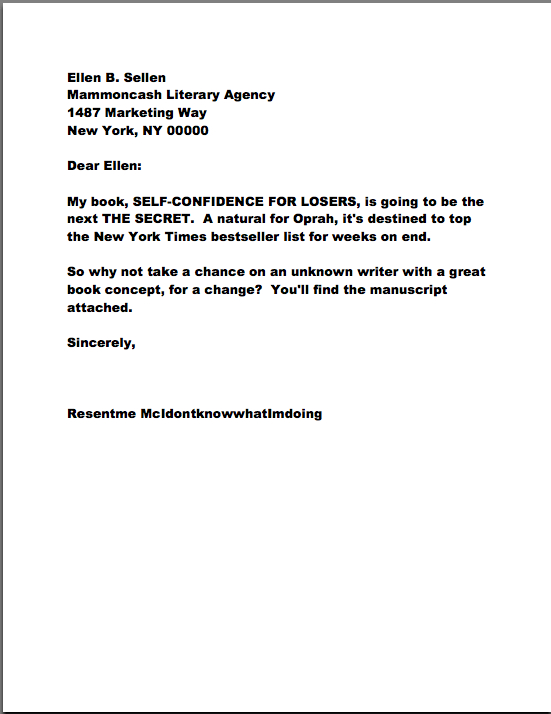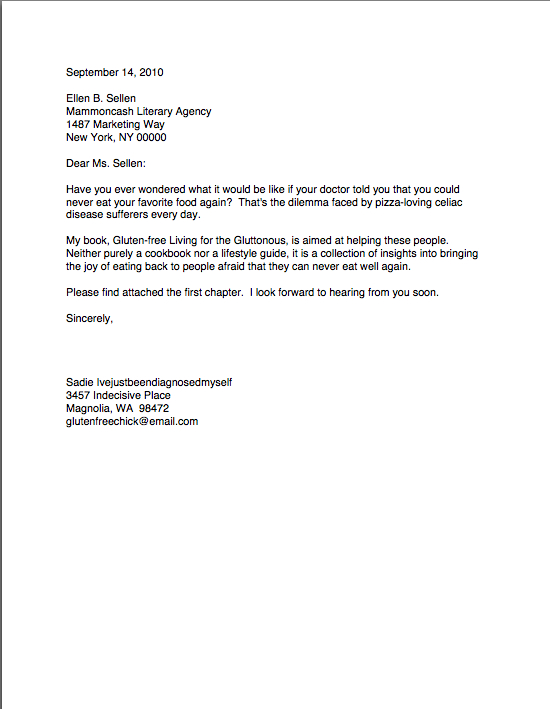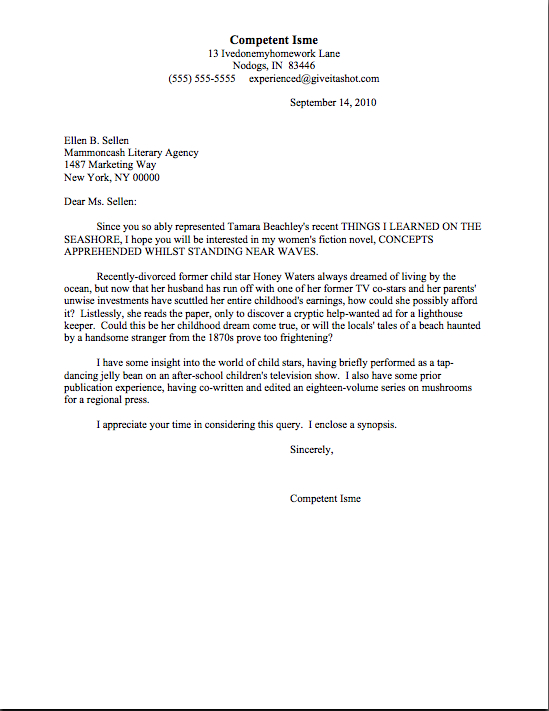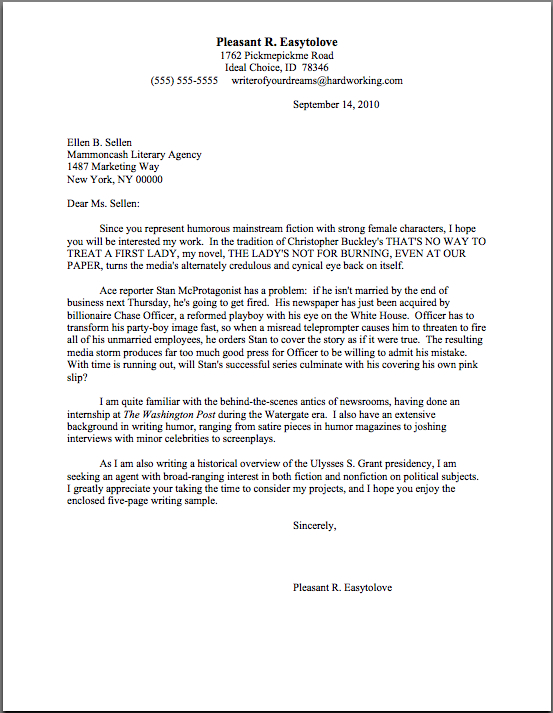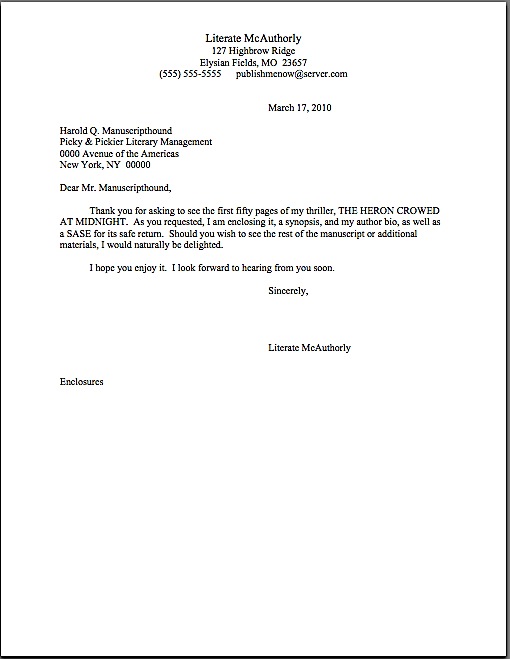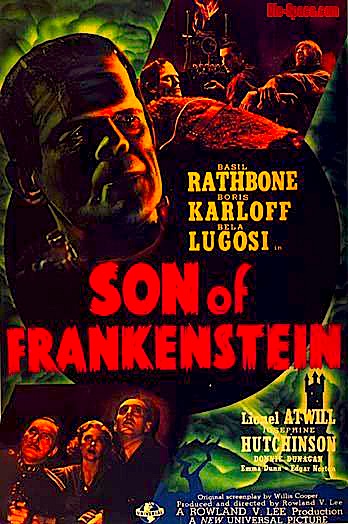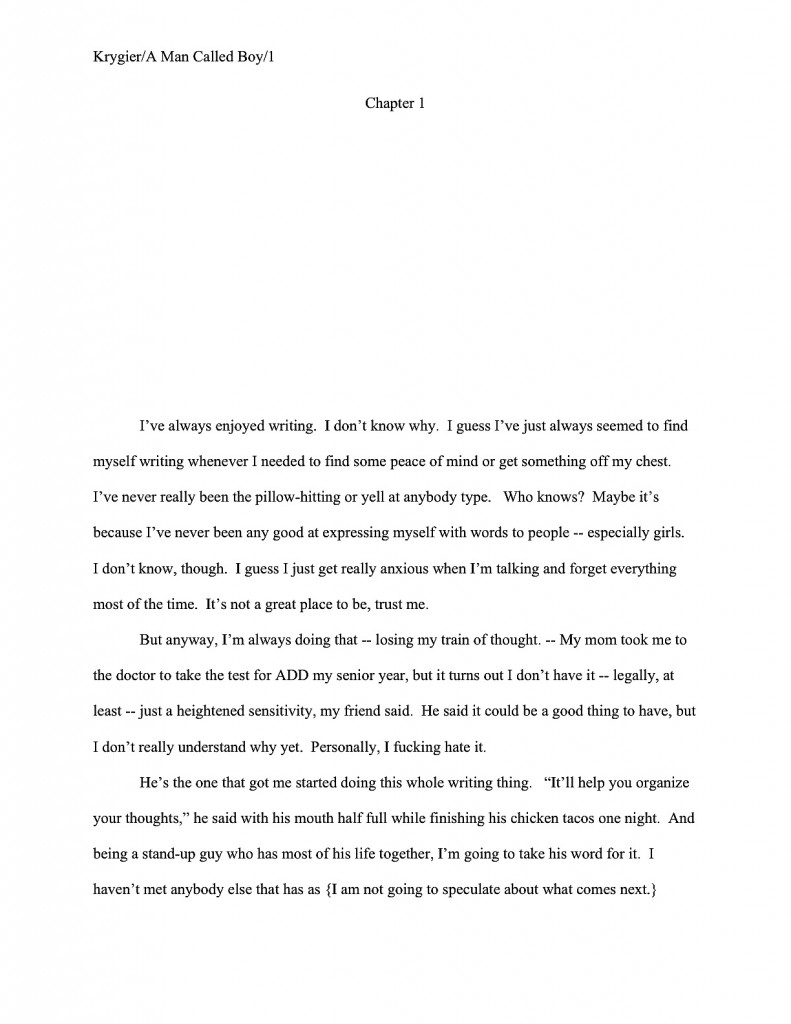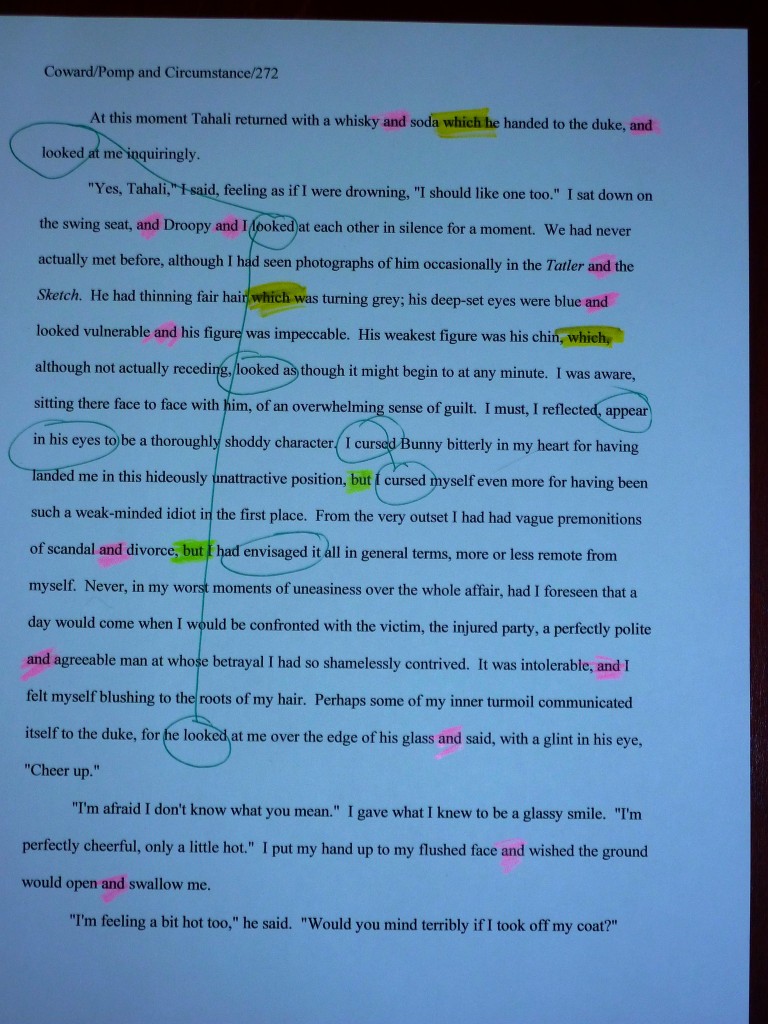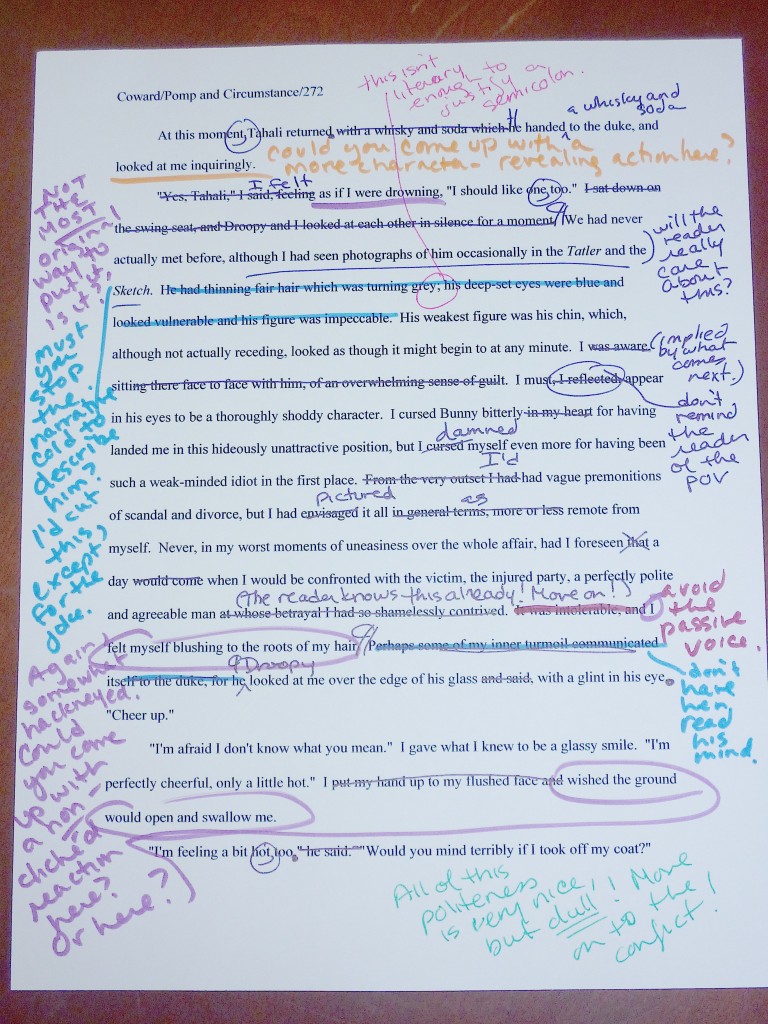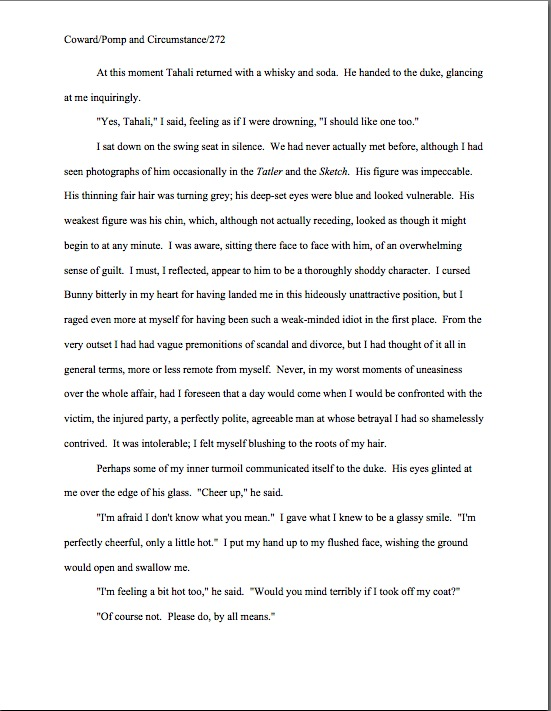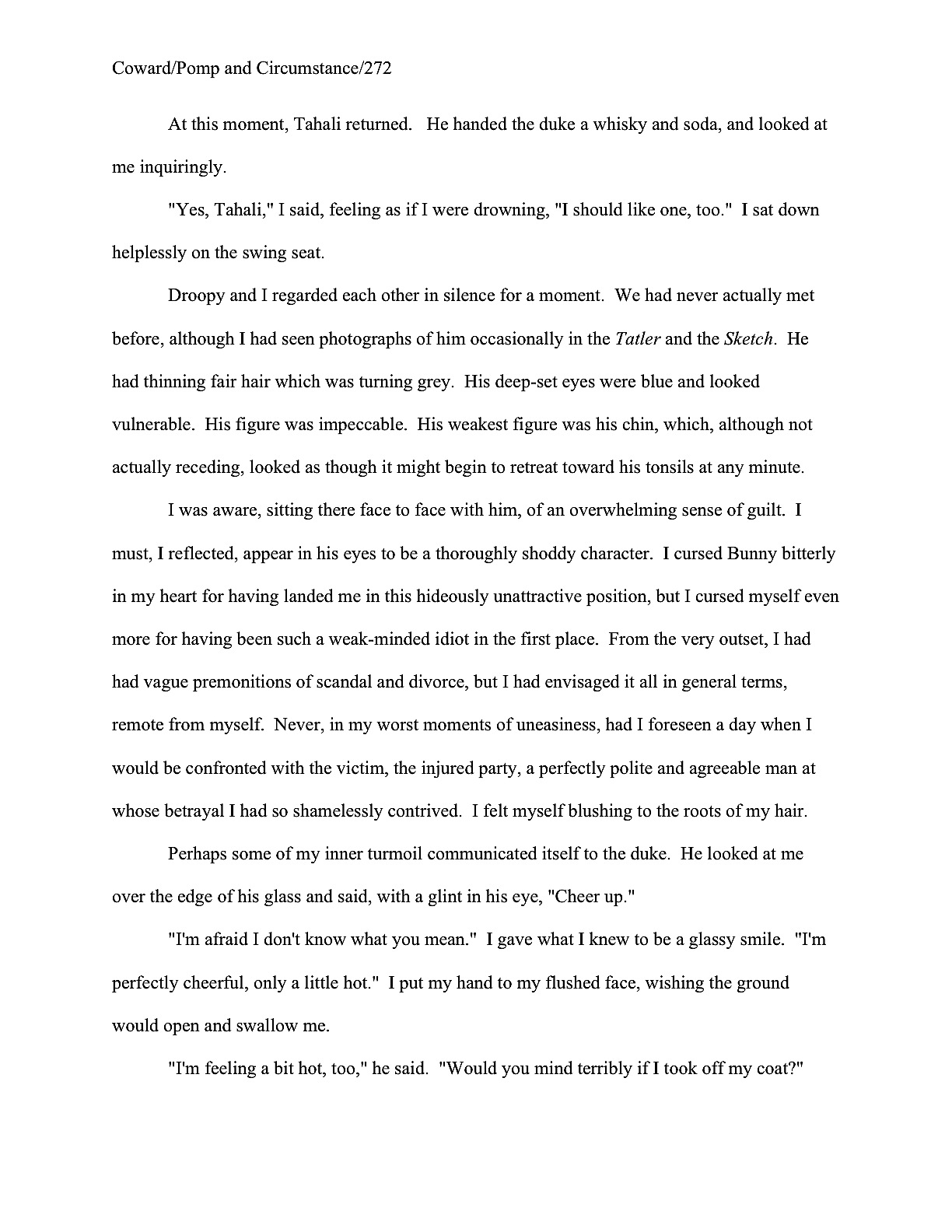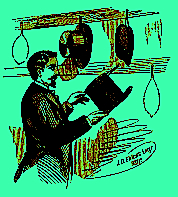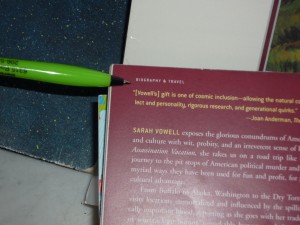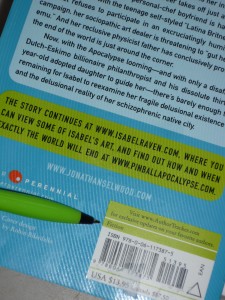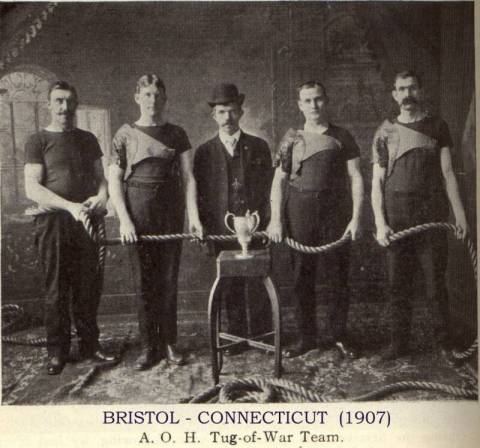I heard your jubilation in the wee hours, campers: at 12:01 this morning, those of you who had been holding your proverbial horses since November’s series on how to focus your querying list so you don’t waste your valuable time approaching agents who do not represent your type of writing gave a giant whoop of joy and reached for your already-stamped SASEs. The Rev. Dr. Martin Luther King, Jr., Day long weekend is now over, and starting this week, the annual tidal wave of New Year’s resolution queries and submissions will be starting to recede.
Translation: a savvy writer may begin thinking about sending off those long-delayed queries and requested materials. Millicent the agency screener will now have time to consider them more carefully.
For the benefit of those new to the perversities of Author! Author!, not so long ago — to be specific, on the first day of this very month — I gave some advice to eager New Year’s resolvers all over this great land of ours: hold off for a few weeks before you start querying and submitting again. Why? Well, for a couple of excellent reasons, up to and including the fact that every year, thousands upon thousands of aspiring writers resolve that this year, by gum, they’re going to get that novel published.
The results are clearly visible on the second mailing day after the New Year’s holiday: our old pal Millicent is up to her eyebrows in queries. It does not, to put it mildly, put her in the best of moods — and one does not need to be the Amazing Kreskin to guess whether a grumpy, overworked screener with 740 queries cluttering up her desk or in her e-mail inbox will be more or less inclined to reject at the sight of the first typo than a happy, well-rested one greeted by a mere 327 queries at the beginning of her workday.
The same principle holds true, of course, for requested materials. As we’ve been discussing throughout our recent series of standard format for manuscripts (and don’t worry, e-queriers and submitters: there’s another Formatpalooza post in the offing especially for you), it’s Millicent’s job to be nit-picky and rejection-happy. If she weren’t, her boss — the agent for whom she screens queries and submissions — would end up spending so much time reading potential clients’ work that she would have no time to sell her existing clients’ books.
You wouldn’t want that, would you?
If you harbor aspirations of making a living as a writer of books, you shouldn’t. After all, reputable agents don’t stay in business by tracking down exciting new talent, at least not directly: they make their livings, and their clients’ as well, via placing works by already-signed authors.
Believe me, once you are one of those authors, you will be grateful for this arrangement.
Seriously, reading time is a scarce commodity for many a successful agent. Since those authors are constantly producing new manuscripts, and since the literary market is constantly changing, agents do indeed need to be reading constantly — but not necessarily submissions from would-be clients. Even the most literature-loving agents may devote only a small fraction of their time to scanning new writers’ manuscripts.
Thus Millicent’s job security: the agent relies upon her to winnow out the overwhelming majority of queries and submissions, so that he may devote his scant reading time to only those most likely to catch his fancy.
But that’s not how most writers trying to break into print think agencies work, is it? “But Anne,” aspiring writers everywhere mutter, “that’s appallingly cynical. Isn’t it the agent’s job — not to say responsibility, obligation, and/or glory — to ferret out the best and brightest of new talent? Isn’t it, in fact, his role in the literary world to discover brilliant undiscovered talent like me?”
Actually, no, it isn’t. It’s his job to sell books by his existing client base, period. But don’t lose heart: you have the ever-malleable market to thank for his impulse to seek out new talent. What is selling today might well not be selling next week.
So yes, that agent does need you. Or someone like you. Fortunately, around this time of year, Millicent is still getting upwards of 800 queries a week from your adorable ilk.
I hear that undercurrent of grumbling out there: this deck seems a trifle stacked against those new to the game. Especially if, like the overwhelming majority of new queriers, you had previously believed that the guiding purpose of the literary agency as an institution was essentially charitable — to discover new writing talent and bring it, lovingly cradled, to an admiring public.
If that last paragraph made your stomach drop to your knees, you’re not alone. Most new queriers and submitters are stunned to learn that the agency system is not set up primarily to discover them.
It will save you a lot of heartache to learn how the process actually works, as well as what to expect. Not to mention to grasp how the publishing world has changed in the last twenty years: in 1990, there were roughly 48,000 different books published in the United States; last year, there were about 250,000.
Starting to make sense that the agent of your dreams needs Millicent to do his preliminary reading for him? There are a heck of a lot of manuscripts floating around out there.
So welcome, neophytes — and kudos to you for being smart enough to do your homework before you start boxing up your hopes and dreams and sending them off to strangers. Welcome, too, to those preparing to send out your next raft of queries or that long-delayed packet of requested materials, as well as all of you who are trying to work up nerve to start querying again after a painful rejection. And a big, hearty how-are-you-doing? to the many, many aspiring writers out there intent on finishing up a writing project while contemplating the challenge of landing an agent from out to the corners of their eyes.
I’ve got a treat for you, wrapped in a bitter coating. Today, we’re going to talk about the history of writers just like you — and while we’re at it, debunk a few widely-believed myths.
How books used to get published during the Taft administration, or, how a surprisingly high percentage of aspiring writers believe the industry still works
A hundred years ago, the publication process was pretty straightforward: an author wrote a book, contacted an editor at a publishing house, and if the editor liked it, he (it was almost invariably a he) chatted about it with senior staff; if he could convince them to take a chance on the manuscript, he would edit it for publication. Printing presses were set in motion, and in due course, the book was available for sale. The publisher sent out advance copies to newspapers, so they could produce reviews.
Of course, that was back when there were few enough books published in these United States that most releases from a good-sized publishing house could garner a review in a major newspaper or magazine. Think about it: in 1910, there were only 13,470 book published; assuming that a good newspaper ran its book review section once per week, and covered ten books each time, any given new release had about a 1 in 25 chance of getting reviewed. Even greater, if the subject matter had local interest.
Now, so many books are published in any year that only a tiny fraction of them enjoy the substantial publicity of a newspaper or magazine review. Not only are there exponentially more new releases, but fewer and fewer print sources publish book reviews at all.
Back to days of yore. Amazingly, considering that authors often possessed only one copy of their manuscripts — remember, the photocopier wasn’t invented until 1938, and it wasn’t commercially available until two decades later — it wasn’t uncommon for writers just to pack their books into boxes and send them to publishers without any preliminary correspondence. The result was what’s known in the biz as an unsolicited submission, but unlike today, when a manuscript that appears on an editor’s desk out of a clear blue sky is invariably rejected unread, publishers would set these books aside until some luckless employee of the publishing house had time to go through the stack.
This ever-burgeoning source of reading material was known as the slush pile. Although solicited submissions (i.e., those that the editor has actually asked to see) have probably always enjoyed a competitive advantage, slush pile manuscripts did occasionally get discovered and published.
They also, predictably, got lost on a fairly regular basis. Thus the old writerly truism: never send anyone the only copy of your manuscript.
It’s still not bad advice, by the way. Hard disks do crash from time to time.
Because there were fewer manuscripts (and publishing houses were more heavily staffed) before the advent of the personal computer, a writer did not need an agent: it was possible to deal directly with the acquiring editor, or at any rate with the luckless assistant whose job it was to go through the slush pile. But back when the hefty Taft was overseeing the nation’s business, it was also still completely permissible to submit a manuscript in longhand, too.
Times change, as they say. One of the ways that time changed the publishing industry was that publishing houses began expecting to see fiction and nonfiction presented to them differently.
The fiction/nonfiction split
Both historically and now, novels were sold to publishers in pretty much the form you would expect: as complete manuscripts, and only as complete manuscripts. At least, they buy first novels that way; until fairly recently, the major publishing houses quite routinely offered fiction writers who had written promising first novels could snag a multi-book contract.
It took until the 1990s for publishers to notice that a commercially successful first book is not necessarily an absolute predictor of whether the author’s second or third book will sell well. Or, to turn that around to the author’s perspective, that a book she had spent five or ten years perfecting might have been just a trifle more polished when it hit the shelves than one her publisher expected her to crank out in the year after her first book was released. While she was on a book tour, no less.
As a result, while multi-book contracts still exist — particularly in YA and genre fiction, markets conducive to series — they have become substantially less common for fiction. While previously-published authors can occasionally sell subsequent books based upon only a few chapters (known, unsurprisingly, as a partial), novelists should expect to write books before they can sell them.
Nonfiction, however, is typically sold not on the entire book, but via a marketing packet known as a book proposal. There are several hefty categories on the archive list at right on how to put one together, but for the purposes of this post, a generalization will suffice: a book proposal is a packet consisting of a description of the proposed book, a sample chapter, descriptions of subsequent chapters, and an array of marketing materials. Typically, these materials include everything from a detailed analysis of similar books already on the market to an explanation of who the target readership is and why this book will appeal to them to a marketing plan. Traditionally, previously published writers also include clippings of their earlier work.
Basically, a book proposal is a job application: in effect, the writer is asking the publishing house to pay her to write the book she’s proposing. (For some guidance on how to put one of these intimidating packets together, check out the mysteriously-named HOW TO WRITE A BOOK PROPOSAL on the archive list conveniently located at the lower right-hand side of this very page.)
That does not, however, mean that the writer will get paid up front, at least not entirely. Because buying something that does not exist obviously entails running the risk that the author may not deliver, the advance for a book sold in this manner is typically paid in three installments, one when the publication contract is signed, another after the editor has received and accepted the manuscript, and a third when the book actually comes out.
Call it an insurance policy for authorial good behavior. Apparently, novelists are regarded as shiftier sorts, because to this day, the only acceptable proof that they can write a book is to have already written one.
Everyone clear on the fiction/nonfiction distinction? Good. Let’s move on to one of the other great cosmic mysteries.
The lingering demise of the slush pile
Just to clear up any misconceptions floating around out there: if you want to sell a book to a major U.S. publisher in the current market, you will need an agent to do it for you. The slush pile is no more; currently, all of the major houses will accept only represented manuscripts.
Like any broad-based policy, however, it comes with a few caveats. We’re only talking about the great big publishers here; there are plenty of smaller publishers that do accept direct submission. One hears tell of some children’s book divisions at major houses that still accept direct submissions; if an editor meets a writer at a conference and positively falls in love with his work, it’s not unheard-of for the editor to help the writer land an agent (usually one with whom the editor has worked recently) in order to side-step the policy. Stuff like that.
But it’s not wise to assume that you’re going to be the exception. If you’re hoping for a contract with a big publisher, get an agent first.
This was not always a prerequisite, of course. Until fairly recently, one element of that fiction/nonfiction split I was regaling you with above was that while novels had to go through an agent, nonfiction writers could submit proposals directly to publishers. Not so much anymore.
You novelists out there are a bit restive, aren’t you? “But Anne,” I hear some of you complaining, and who could blame you? “This is starting to seem a trifle discriminatory against my ilk. NF writers are presenting substantially less writing than fiction writers; a proposal’s what, 40-60 pages, typically? As a novelist, I’m expected to produce an entire book. I would have thought that if publishing houses were going to distrust anybody enough to want an agent to vouch for ‘em, it would be the author whose book they were buying at the idea stage.”
Don’t upset yourselves, oh novelists; it’s not good for your stomach acids, and besides, since everyone needs an agent now, it’s a moot point. But I suspect that the answer to your question is that that publishers habitually receive far more fiction submissions than nonfiction ones — interesting, given the long-standing industry truism that fiction is easier to sell, both to editors and to readers. (It probably also has something to do with the fact that nonfiction books are often proposed by those with clip-worthy previous publishing credentials, such as magazine articles and newspaper columns, but believe me, the other reason would be more than sufficient.)
Before petty bickering begins to break out between fiction and nonfiction writers over a situation that has more or less vanished anyway, let’s turn our attention to a more absorbing topic: why would the big publishing houses feel so strongly about agents that they would all agree upon a represented-books-only policy?
The rise of the agent
Although many aspiring writers regard the necessity of procuring an agent as a necessary evil at best, agents perform an exceedingly important role in the current publishing market. Not only do they bring brilliant new writers and amazing new books to editors’ attention, but they are now also effectively the first-round submission screeners for the publishing houses.
How so? By passing along only what they consider marketable and of publishable quality, agents thin the volume of submissions the publishers see on a monthly basis to Niagara Falls, rather than the Atlantic Ocean. In other words, they reject so the publishers don’t have to do so.
It’s easy to resent agents for this, to think of them as the self-appointed gatekeepers of American literature, but that’s not really fair. Much of what they assure that the editors never see honestly isn’t publishable, after all; I hate to disillusion anyone (and yet here I am doing it), but as Millicent would be the first to tell you, a hefty majority of the writing currently being queried, proposed, and submitted is not very well written. Even very promisingly-written submissions are often misformatted, or would require major editing, or just plain are not quite up to professional standards.
Or so runs the prevailing wisdom; we could debate for weeks over the extent to which that’s really true, or how difficult it often is for genuinely innovative writing to land an agent. Suffice it to say that if the major publishers believed that agents were rejecting manuscripts that their editors should be seeing, they presumably would change their policies about accepting only agented manuscripts, right?
Think about it. You’re perfectly at liberty to continue to resent it, of course, but it will help you to understand the logic.
“Okay, Anne,” I hear some of you reluctantly conceding, “I get that if I hope to sell my book to a major U.S. publisher, I’m going to need to find myself an agent. But if you don’t mind my asking, what do I get out of the exchange, other than a possible entrée to an editorial desk?”
A good agent can do quite a bit for a writer. First, as you reluctant conceders already pointed out, an agent can make sure your manuscript or book proposal lands on the right desks: not just any old editor’s, but an editor with a successful track record in acquiring books like yours and shepherding them through the sometimes difficult publication process. Pulling that off requires both an intimate knowledge of who is looking to buy what right now – not always an easy task, considering how quickly publishing fads change and editorial staffs turn over — but also the connections to enable a successful pitch to the right audience.
Again, think about it: for an agent to be good at his job, he can’t just send out submissions willy-nilly. He must have the experience to target the editors who are most likely to be interested in any given book.
Agents also negotiate book contracts for their clients, act as a liaison between the author and the publishing house, and help mediate any disputes that might arise. Like, for instance, if the publishing house is being a mite slow in coughing up the contracted advance.
Yes, it happens, I’m sorry to report. And if it happens to you, you’re going to want an experienced agent on your side, fighting for your dosh.
Admittedly, it will be very much in your agent’s self-interest to make sure that you’re paid: in the U.S., reputable agents earn their livings solely from commissions (usually 15%) on their clients’ work. That means, of course, that if they don’t sell books, the agency doesn’t make any money.
As we discussed above, agencies are seldom non-profit enterprises. Doesn’t it make sense that agents would not take on manuscripts that they do not believe they can sell in the current market, even if the writing happens to be very good indeed?
Typically, the agent will handle all of the money an author makes on her book: the publisher pays advances and royalties to the agency, not directly to the author; the agency will then deduct the agent’s percentage, cut a check for the rest, and send it to the author. In the U.S., agencies are also responsible for providing their clients and the IRS with tax information and documentation.
Since self-employed people like writers have been known to get audited from time to time, you’re going to want this level of verifiability. Trust me on this one.
To recap: how things have changed since William Howard Taft roamed the earth
Way back when: aspiring writers used to be able to approach editors at major publishing houses directly to market their books.
The reality now: with few exceptions, a writer will require an agent to approach a publisher for her.
Way back when: fiction and nonfiction books were marketed in the same manner, as already-completed manuscripts.
The reality now: fiction is sold on the entire manuscript; with certain exceptions, nonfiction is sold as via a book proposal.
Way back when: nonfiction writers could approach major publishing houses directly with their book proposals.
The reality now: agents submit both fiction and nonfiction books on behalf of their authors.
Way back when: agents played a substantially smaller role in the overall dynamic of U.S. publishing.
The reality now: they largely determine which manuscripts editors will and will not see.
Way back when: an author often formed a personal relationship with his editor and other publishing house staff, sometimes lasting decades.
The reality now: the editor who acquires a book may not still be the editor handling it by the time it goes to press; a good agent can do a lot to help smooth over any resulting difficulties.
Um, Anne, I was not laboring under the misconception that Taft was still president. Why are you telling me all of this while I’m gearing up to send out my next round of queries and/or submissions?
An excellent question, campers, and one that fully deserves an answer: because all too often, even market-savvy queriers and submitters assume, wrongly, that the only conceivable reason their work might get rejected is the quality of the writing. If the manuscript were well-written, they reason, any agent in her right mind would snap it up right away, right? So if the first says no, they all will.
These days, more than ever, that’s just not true. Agents specialize, market conditions change, and as any writer who has landed an agent within the past five years can tell you, whether a hundred agents have said no has no effect whatsoever on whether Agent 101 will say yes. It’s a matter of personal literary taste — and a thousand other factors.
Translation: keep moving forward, in spite of rejection. The right agent for your work may well be out there, but if you don’t try to find her, she’s never going to find out that you’re the client of her dreams.
Remember, the only manuscript that has no chance of getting published is the one that just sits in a desk drawer, gathering dust, because the writer doesn’t have the nerve to send it out.
Again, that flies in the face of common writerly conceptions of how the next big talent gets discovered, doesn’t it? The fantasy runs a little something like this: if a writer is really talented, an agent would spontaneously appear on his doorstep the instant he finishes typing THE END and sign him to a long-term representation contract on the spot (and without reading the manuscript, apparently). By the end of the week, an editor at a major publishing house offers a million-dollar advance — and by the end of the month, the author is smiling at Oprah’s studio audience, saying, “Oh, it’s all been such a whirlwind.”
Except that’s not how 249,980 of those 250,000 books got published in the United States last year. Most of the ones who ended up on Oprah were nonfiction writers, anyway, and not talking about their first books.
That’s not going to make the starry-eyed writer of a genuinely good first novel feel less disappointed when only one of the fifteen agents she queried asks to see pages, though, is it? Or when the one who asks to see it doesn’t respond for three or four months, as is now quite common. Or even — brace yourself, dreamers — doesn’t respond at all if the answer is no.
Nothing I mentioned in the last paragraph is any reflection whatsoever on the quality of the writing in the manuscript in question, right? It’s just how the process works these days.
Realistic expectations might not be very sexy, but learning the basic contours of how real writers actually get their books into print will help you keep the faith through the long and often frustrating querying and submission process. And that, my friends, is the best way to get your manuscript published: not by waiting for lightning to strike you, but by bellying up to that buffet day after day, week after week, and, if necessary, year after year.
Why? Because Taft isn’t president any more, and it’s a heck of a lot harder to sell a book to a publisher now. You don’t want to land just any agent; hold out for the one who can help you do it beautifully.
Next time, I shall be talking a bit more about what happens to your query and submission after it lands on Millicent’s desk. Keep up the good work!








